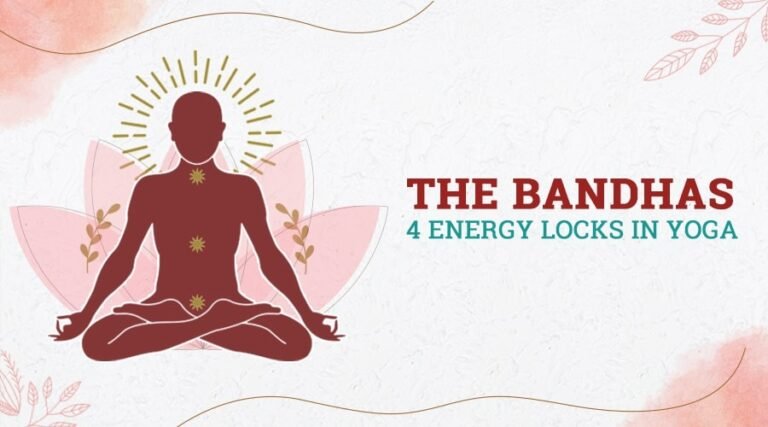Shatkarma Kriyas: Detoxify Your Body and Mind the Yogic Way
To some, yoga is all about elaborate poses and smooth movements with the breath. But what if there is something more to this practice and there is, in fact, a door that opens to an even greater level of wholeness? This doorway is the secret to Shatkarma, a six-step yogic purification process focused on internal and external cleansing.
Think of it not only as a form of exercise but more as a cleansing process that takes place internally as you build and tone muscles externally. Shatkarma also helps in cleaning stagnated toxins and wastes, which further affect the energy, digestive system, and brain.
Through the inclusion of these habits in your practice, you are creating a pathway for a more animated and life-changing journey, not only in your practice but in every other aspect of your life.
What is Shatkarma?
Shatkarma, which in sanskrit means six actions, shat meaning six and karma meaning action, therefore six actions, is the general umbrella for a set of six yoga cleansing techniques.
These practices are meant to purify the internal pathways in your body so as to get rid of toxins that may be present within your system, which, as a result, helps to create the right environment for a more intense and fruitful yoga session.
A Brief Guide to Each Shatkarma
Although it is important to know the advantages of Shatkarma, it is vital that people are careful when they are practicing the activities. Each of them needs individual teaching and may have some adverse effects.
Below, we have described every Shatkarma kriya, with a focus on cautious learning:
Neti (nasal cleansing): A solution of salt water is introduced into one of the nostrils and then expelled out of the other nostril; this effectively clears and washes the nasal passages and sinuses.

Precautions: people having clogged ears, on antibiotics for ear infection or sinus infection, or having a deviated septum should clear it with a doctor before attempting Neti. Neti pots must always be cleaned with clear, warm water to avoid the transmission of diseases and ailments.
Dhauti (internal cleansing): It is a collection of yoga cleansing techniques that use various motions, such as the use of water or particular yoga poses.
- Important Note: It is strongly recommended to practice Dhauti under the supervision of an experienced yoga instructor due to the numerous potential issues that may arise from this procedure.
Basti (enema): This practice involves washing out the interior of the lower intestine through the ingestion of water or herbal solutions.
- Contraindications: Patients with abdominal disorders, those who have undergone surgeries in the recent past, or those who have piles should not drink asti. Many of these yoga cleansing techniques might make certain people experience discomfort, so it is recommended to seek the permission of a physician before trying Basti.
Trataka (eye cleansing): It is an exercise where one has to fix eyes on a particular point in the direction to build up the muscles of the eyes and enhance concentration level.

- Trataka practice is safe for nearly all people if they are sure of the cause of the problem and try to correct and practice the technique correctly. But, when starting, it is better to choose short intervals and gradually increase the time spent on practicing.
Kapalbhati (breathing technique): a strong type of breathing exercise that includes forceful expulsion of breath, activation of the digestive system, and elimination of toxins.
- Contraindications: It is not advised for those with epilepsy, high blood pressure, or heart problems to practice kapalbhati breathing. It is recommended that this form be done under the guidance of a yoga specialist to avoid any potential risk.
Nauli (abdominal massage): This is an extensive yoga detoxification procedure that includes stimulating the abdominal organs, pulling and twisting the abdominal area, and improving the body’s overall detoxification mechanism.
- Nauli is a complex yoga cleansing technique and should not be practiced by anyone without the guidance of a qualified yoga instructor.
Remember: Safety comes first! It is advised that before performing any Shatkarma kriyas or getting the supreme benefits, you first get expert guidance from a certified yoga instructor or qualified Ayurvedic practitioner. They can advise on the best tactics to employ and assist in avoiding negative side effects, making the process safer.
Shatkarma Benefits: Cultivating Inner Radiance
The act of satkarma is a highly beneficial yoga cleansing technique that has numerous advantages that go beyond the process of purification. If you practice these techniques regularly, you will achieve a feeling of well-being that will extend to your body, mind, and spirit. Let’s explore some of the key benefits of regular Shatkarma practice:
- Physical Ayurvedic Detoxification:
Some of the toxins find their way into the body system through environmental pollution and the contents of toxic compounds, processed foods, and substances that are naturally produced in our bodies as a result of metabolism.
Kriya yoga cleansing techniques such as Dhauti, which is the cleansing of the internal organs, and Basti, which is enema, remove these toxins from the body, hence making the inside environment cleaner. This, in turn, can help one have better skin health, a reduced bloating feeling, and generally a feeling of being lighter.
- Improved Digestion:
A large number of Shatkarma practices, like Basti and Nauli, which are types of abdominal massage, have a direct impact on the stomach. They can advance the functioning of the bowels and thus boost digestion and minimise conditions such as constipation and diarrhoea.
Digestion also alleviates this since consuming smaller portions also means that the stomach and the gut will work effectively to break down the food properly, promoting good bacteria and a healthy gut microbiome, which are crucial to the overall health and immune system.
- Enhanced Respiratory Function:
Neti (nasal cleansing) is a potent method to saturate blockages and restore free blood flow to the nasal passages. This can result in better breathing, a decrease in allergenic effects, and even better quality of sleep.
Generally, when you supply your body with fresh oxygen, disease-free air, or filtered air, you are able to have improved energy levels because oxygen is very vital for energy production in the body.
- Increased energy levels:
Since Shatkarma practices rid the body of toxins and enhance the functions of your digestive and respiratory systems, energy levels are bound to rise. Here, you are likely to get relief from fatigue, increased working capacity, and a fresh feeling throughout the day.
- Mental Clarity and Focus:
Shatkarma not only internally and externally purifies the body but also balances the mind. Techniques like Trataka, the eye cleansing practice, and Kapalabathi, the breathing technique, can be used to train the brain to concentrate, eliminate the effects of dullness and anxiety, and instigate a period of focus and calmness. This may prove helpful not only in your yoga practice but in other areas of life, including work and general well-being.
- Improved overall well-being:
Thus, the collective improvements in physical yogic detoxification, better digestion, enhanced respiration, and clarity of thought are certainly effective in providing one with a state of complete well-being.
When physically engaged in Shatkarma benefits on a regular basis, you might feel a boost in your body’s immune system, stable emotions, and a rejuvenated energy that spreads through the very core of your being.
It is also important to remember that Shatkarma is a process, not an endpoint. Besides the diet and all the healthy changes, the regular practice of these ancient techniques is seen as the key to realising the potential of these methods to cleanse the body.
Conclusion
In conclusion, Shatkarma reveals another level of transformation in your yoga practice that goes beyond the physical and emotional states. As effective and grand as these six yogic purification techniques are, they should be respected and practiced under appropriate guidance. Shatkarma, when learned under the guidance of an experienced guru, provides a foundation to begin the process of internal purification.
As said before, shatkarma is only part of the strategy of cleaning our bodies as a whole. If you would like to get even better results by optimising your inner environment, try to go a step further. This may include paying particular attention to the quality and proportionality of the food taken, the practice of meditation or pranayam for preventing stress, and a good sleeping habit.






